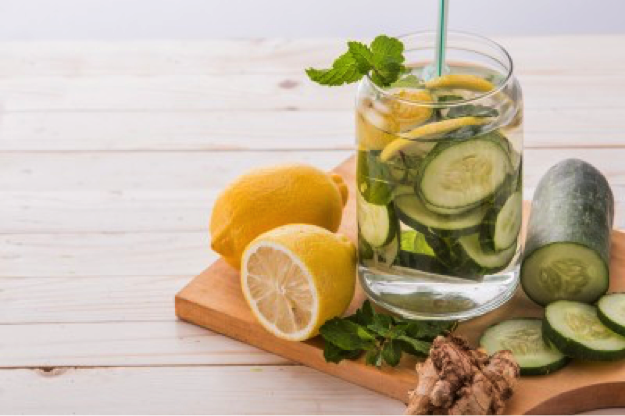Humans and plants both need water to survive. Humans need water to drink and bathe in, and plants also need water to uptake essential nutrients from the soil. Unfortunately, not all water is created equal. Some water has higher levels of contaminants than others, making it difficult or impossible for plants to thrive.
What Should We Do To Improve Water Quality?
Water quality is a major issue worldwide, and the United States is no exception. We live in a country where nearly 1% of the population does not have access to contaminated-free water. It is estimated that over 743 billion dollars are needed to upgrade water infrastructure nationwide. While water quality is improving in many areas, it is still far from ideal. The Flint Water Crisis, which began in 2014, demonstrates the dangers of poor water quality.
Access to clean water is crucial to our health and the environment. Humans are composed mainly of water, accounting for more than 50% of our body weight. As such, we are highly vulnerable to water pollution, affecting our health and the environment. Many contaminants found in water are toxic and can impair our health.
There are several ways we can help improve water quality. We can use filters, keep our storm drains free from debris, and maintain our septic tanks. We can also avoid drinking water that is contaminated. Finally, we should avoid using hot water for water consumption, as this exposes us to harmful contaminants. We can also hire a plumbing company to help us improve our water quality.
What Makes Water High Quality?
There are several factors to consider when assessing water quality. Some of these factors can affect health and safety. Hardness, for example, is an important consideration. It measures the concentration of calcium and magnesium ions in water. High levels of either can affect water taste and the efficiency of chlorine disinfection. Hard water can also increase the solubility and toxicity of heavy metals. In addition, the pH level of water is important. A pH of seven or less is considered “soft” water; more than seven is considered “hard water.” Most people prefer to have a pH of four or less.
Besides its physical qualities, pH levels also reflect the human impact on water quality. pH reflects the presence of acidic or basic compounds. The pH scale ranges from 1.0 to 6.9 for acidic water and 7.1 to 14.0 for alkaline water. In contrast, pure water has a pH of 7.0, meaning it contains zero acid or base. Its color, however, reflects the presence of inorganic matter and vegetation. While color does not affect safety, it does make water appear unappealing.
What Are The Main Types To Improve Water Quality?
Water quality affects human well-being in many ways. Changes in one water quality component may affect different beneficiaries over different spatial and temporal scales. Understanding the effects of these changes on human well-being is essential for planning and implementing water quality projects.
Water-quality improvements are essential for human and environmental health. Over the last half-century, the nation’s water quality has improved significantly. However, challenges remain. The goal is to make our water as clean and safe as possible. This requires an approach that combines a wide range of efforts to improve water quality.
The role of wetlands in improving water quality cannot be overstated. By reducing the export of pollutants from the landscape, they can improve water quality and protect aquatic ecosystems. As a result, the loss of wetlands represents a significant loss in landscape buffering capacity. Wetland loss leads to increased solute loads in water and reduced habitat integrity. The Midwest region is particularly vulnerable to the adverse effects of wetland loss.
How Can We Maintain The Quality And Safety Of Water?
There are many reasons to protect the quality and safety of the water used for human consumption. Water pollution can cause illnesses and diseases, especially in infants, the elderly, and people with weakened immune systems. In addition to harming human health, contaminants in water can also harm the environment. In the United States, water quality standards are set by the Environmental Protection Agency (EPA), which regulates over 90 chemicals in the water. These chemicals include dissolved chemicals, metals, and disinfection byproducts.
The World Health Organization (WHO) has issued guidelines on water quality. These guidelines are published in three volumes, each addressing a particular contaminant. While it is impossible to impose strict standards on water supplies everywhere, the guidelines provide guideline values for more than 60 parameters. Most nations use these guidelines, but regulations and guidelines vary between countries.
Guidelines based on scientific evidence are used to develop risk management strategies. Safe practices are identified as reasonable minimum requirements. They include numerical “guideline values” for water constituents and indicators of water quality. However, they should be considered in the context of local conditions and as part of a comprehensive health protection strategy.
How Can You Conserve Water At Home?
Water is one of the essential elements in life, yet it is finite. If we don’t manage it properly, we will experience severe shortages shortly. Water conservation can help us avoid this problem by using less water for various purposes. Among these is watering the plants and lawn sparingly. Moreover, we can install shade trees in our garden, protecting the soil and reducing the amount of water we use for watering them.
You can also conserve water at home by replacing your conventional dishwasher with a water-efficient one. You can also use a rain barrel to collect rainwater or create a rain garden in your yard. It is a good idea to check your water bill to identify the areas that are wasting a lot of water. Moreover, you can also ask your local government for a water audit, which can help you evaluate your water usage in your home. Using these simple measures, you can also help your community by reducing the demand for water supplies. As a result, your community will benefit from a cleaner environment, and residents can enjoy recreational benefits.
Taking shorter showers is another way to reduce the water you use. The average American shower lasts 7.8 minutes and uses 15.8 gallons of water. If you want to save even more water, you can cut the duration of your showers and wash your hair less often. Alternatively, you can store a pitcher of water in the fridge when you need a quick shower.
How Can We Get Clean Water And Sanitation?
It is fundamental to a healthy life that you have access to clean water and sanitation. You can be exposed to more diseases without clean water, and 80% of the world’s illnesses are water-related. Improving access to clean water and sanitation can help reduce the risk of water-related illnesses and save lives. It also strengthens crops and reduces the risk of global hunger.
You can help by volunteering with nonprofits that provide clean water and sanitation. Organizations such as Healing Waters can help by organizing cleanup projects and raising awareness. Sustainable communities are built by these organizations through the implementation of safe water solutions. They also promote clean water education and create resources for people in need. The goal is to eliminate water scarcity and promote safe water solutions worldwide. Some of their methods include organizing community water treatment projects and using social media to spread awareness about clean water.
Does Boiling Tap Water Purify It?
While boiling tap water will remove most pathogens, it won’t remove all contaminants. The heat produced by boiling the water will damage the outer shells of bacteria and viruses and destroy important proteins. Boiling the water will not remove chemical contaminants, however. It may worsen water quality problems. For instance, boiling water doesn’t remove chlorine; it can combine with other substances that can increase the levels of contaminants.
Generally, tap water isn’t as clean as we think. The water treatment plant adds chlorine and fluoride to kill bacteria, but the water’s pipes can still contain contaminants. Once the water leaves the treatment plant, it travels through miles of pipes and may pick up more contaminants.
The easiest way to purify water is to boil it. It kills bacteria and other harmful microorganisms. It also keeps the minerals that are normally present in tap water. Moreover, drinking warm water can improve your blood circulation and metabolism.
What Are Some Methods To Purify Water?
There are several different methods to purify water. Your choice depends on your personal preference, location, and budget. Make sure to choose a method you can use consistently and are comfortable with. Some methods involve boiling water. These methods will remove water minerals that are essential for your health. You can also use a distillation process.
Water purification can remove particulate matter, algae, bacteria, viruses, and parasites. These methods differ slightly, but they all reduce the number of contaminants present. Many countries have drinking water standards that specify the number of contaminants in water. Governments and international organizations set these standards.
Chlorine is a common disinfectant used to treat water. Chlorine kills parasites, bacteria, and other microbes. Chlorine is usually used in the form of tablets or liquids. This method should, however, be discussed with your doctor.
Conclusion
When you use hot water, lead can be released into your drinking water if you have lead sources in your home. The cartridges of water filters are routinely replaced. Water heater tanks can be contaminated with bacteria and metals. Water pressure and quality can be affected by this. In addition to removing bacteria, metals, and other contaminants from water, a water filter can also provide disinfection. The better the quality of your filter, the more it will remove. Replace your filter regularly and choose a quality one. Do not use hot tap water for drinking and cooking. Hot water helps to dissolve sediment and other chemicals contained in water pipes. Your water supply becomes contaminated when this happens. Switch to Eco-Friendly and Non-Toxic Products Cleaning supplies, shampoos and soaps can end up in the water supply, so be mindful of what you put down the drain. Storm drains are another essential factor when improving your drinking water quality. Before drinking and cooking with water, run the cold water tap for two minutes. Keeping this waste in its proper place keeps dangerous chemicals out of your water.



